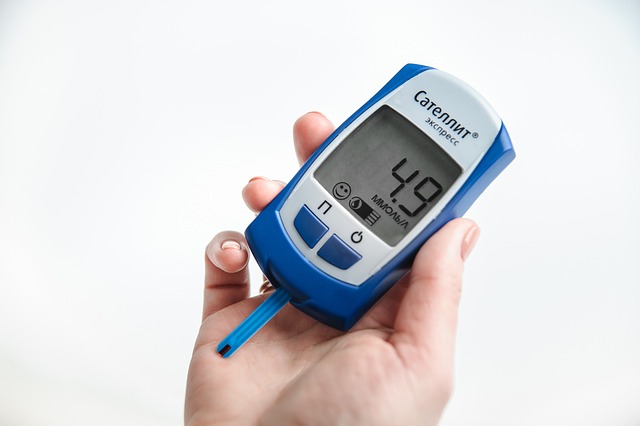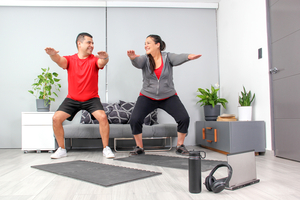Diabetic nerve pain is symptom of diabetic neuropathy, which is a common complication of diabetes. It can limit your activities and interfere with quality of life, and diabetic neuropathy can lead to permanent damage to the areas of your body that are affected. This is what you should know about diabetic nerve pain, who gets it, how to lower your risk, and how to treat it if you get it.
Diabetic Nerve Pain and Other Symptoms of Diabetic Neuropathy
What is diabetic neuropathy, anyway? What are the symptoms, and where does it occur? Diabetic neuropathy describes nerve damage related to diabetes.
Peripheral Neuropathy
The most common type of neuropathy. It can occur in your feet, legs, arms, and hands. Classic symptoms are numbness, tingling, weakness, and pain in the affected areas. You may have trouble walking or with your balance, and symptoms can be more severe at night.[1]
When talking about diabetic nerve pain, peripheral neuropathy might be the most likely cause. You could have severe pain when your arms, hands, legs, or feet are touched lightly. You can also have chronic pain that can get in the way of diabetes management or cause depression or anxiety.
Since your circulation is poor, your feet can develop wounds such as blisters and sores that are slow to heal. You may not notice them because of the poor feeling in your feet. If the wounds progress, they could get infected and eventually a toe, foot, or even leg could need amputation.
Autonomic Neuropathy
Nerve damage related to controlling your internal organs. These can be the areas affected and the signs and symptoms that you may notice.
- Digestive tract: diarrhea, constipation, upset stomach, vomiting, excessive feeling of fullness
- Heart and blood vessels: light-headedness upon standing or starting an activity, changes in heart rate
- Bladder: incontinence, infections
- Sex organs: erectile dysfunction (men), difficulty with orgasms (women)
- Sweat glands: excessive or inadequate function.
Focal Neuropathy
This is less common than peripheral and autonomic neuropathies, but it can still affect over 1 in 4 adults with diabetes. It happens when a single nerve is affected, as in the case of carpal tunnel syndrome. It can be a pinched nerve, called an entrapment, between bones or tissues. This can lead to diabetic nerve pain.
Proximal Neuropathies
These are diabetic neuropathies in your hips, thighs, or buttocks, and they can be extremely painful. You are more likely to get proximal neuropathy if you are an older adult or a man. Symptoms can include:
- Severe pain in the area of damage
- Loss of strength and muscle tone
- Unintentional weight loss
Causes of Diabetic Nerve Pain
Diabetic neuropathy is damage to your nerves caused by complications of diabetes. Regardless of which type(s) of diabetic nerve damage you have, the causes are the same.
The National Institute of Diabetes and Digestive and Kidney Diseases (NIDDK) explains that diabetic neuropathy results from high levels of blood sugar (blood glucose) and high levels of blood triglycerides, or a type of fat or lipid. There are two main ways that glucose and triglycerides cause diabetic neuropathy and the resulting pain.
- Damage to your nerves from high levels of glucose and triglycerides.
- Damage to your small blood vessels when extra glucose in your blood attaches to them. This restricts blood flow throughout your body and reduces the oxygen and nutrient supply to your cells so they do not heal properly.
Who Gets Diabetic Neuropathy?
Over half of people with diabetes will eventually get some type of diabetic neuropathy, according to the NIDDK. About half will get peripheral neuropathy, and about 3 in 10 will get autonomic neuropathy. Up to 1 in 4 have some type of nerve compression at the wrist, which is a type of focal neuropathy.
You are more likely to get nerve damage and experience some type of diabetic nerve pain if you do not keep your blood glucose levels within target ranges. Your chances of developing neuropathy also increase if you:
- Have had diabetes for a longer time
- Are an older adult
- Are overweight or obese
- Have hypertension or high cholesterol
- Smoke
- Consume alcohol in excess
- Have kidney disease.
How to Prevent Diabetic Nerve Pain
- Prevent diabetes
- Manage diabetes
Treatment for Diabetic Nerve Pain
Treatment for diabetic neuropathy can include remedies to provide pain relief, and medications and lifestyle changes to lower blood sugar and prevent progression of diabetic neuropathy in the longer term. You and your medical team can also manage your diabetic nerve pain and neuropathy regularly.

Treatment of Diabetic Neuropathy: Pain Management
When pain strikes, you need relief. The relief strategies listed here may not heal your diabetic neuropathy, but they can help you get through the day.
Physical Activity
Physical activity is among the safest strategies for reducing nerve pain, although the effects are only temporary and exercise does not heal nerves. Exercise also has benefits for diabetes management, since it increases insulin sensitivity and can help with weight loss and lowering triglycerides. Of course, exercise has all kinds of other benefits such as improving mood.
- Choose a low-impact activity, such as swimming or brisk walking. Pounding from high-impact activities can make nerves go numb and increase pain.
- Get your doctor's approval before starting any exercise, and specifically ask about safe exercises with diabetic neuropathy.
- Ask about a referral to a physical therapist who can help you exercise safely.
Dietary Supplements and Alternative Therapies
Some nutritional supplements and other alternative therapies can help reduce diabetic nerve pain symptoms, but always be sure to check with your doctor first.
- Vitamin D: your body can make it with sunlight exposure and it is in some foods, such as fatty fish and fortified milk, but many people have suboptimal levels.
- B vitamins: deficiency of vitamins B12 and B6 can increase feelings of pain and make nerve damage worse.
- Alpha-lipoic acid: this antioxidant may reduce pain.
- Relaxation: yoga, biofeedback, meditation, and massage can help you respond better to pain so that it does not affect you as much.
- Capsaicin: cream, lotion, jelly, and patches can all block pain signals, but have not definitively been proven effective for diabetic nerve pain, and can make you more sensitive to the sun.
Pain Medications
Various types of medications can relieve pain, but all medications can have side effects. These solutions are best only for short-term use, and under your doctor's supervision.
- Over-the-counter (OTC) pain relievers – ibuprofen, acetaminophen, and asprin can work, but ask your doctor how long they are safe to use.
- Anti-depressants and anti-seizure drugs – these can reduce pain, but can have serious side effects.
Treatment of Diabetic Neuropathy: Preventing Progression
The best way to reduce diabetic nerve pain is prevent it or slow the rate of progression of diabetic neuropathy. You can do this by lowering your blood glucose to target ranges if your glucose has been high. Joslin Diabetes Research Center at Harvard Medical School recommends keeping A1C under 7% if you can.
The cornerstones of lowering blood sugar and controlling diabetes are:
- Adopting healthy lifestyle behaviors: weight loss if you are overweight, increasing physical activity, eating well, and getting enough sleep. Did you know that quitting smoking can improve blood flow and reduce diabetic neuropathy symptoms?
- Taking all of your diabetes and other medications as prescribed.
- Measuring blood glucose levels if your doctor recommends it so you can stay motivated to lower them and start to understand what affects your levels.
Treatment of Diabetic Neuropathy: Monitoring
Stay on top of your signs and symptoms so you can recognize any changes quickly and prevent more serious problems from developing. Daily self-care that you can do at home involves checking your feet if you have peripheral neuropathy.[3]
- Inspect your feet every day for any blisters, cuts, corns, or other signs of a wound or infection.
- Protect your feet by wearing shoes and socks and making sure they are neither hot nor cold.
- Trim your toenails straight across to prevent ingrown nails.
Your diabetes care team can also watch for signs of diabetic neuropathy. A podiatrist should inspect your feet at least annually, and an eye doctor should check your vision annually. Your primary care doctor or endocrinologist can check your reflexes if you may have proximal neuropathy, and also refer you to specialists should you need them.
With all that it takes to manage diabetes and with the burden that diabetic nerve pain can place on you, any help that you get can be welcome. Lark for diabetes is a supportive health app that provides empathetic coaching around diabetes management and living a healthy life.



.jpg)









.webp)







